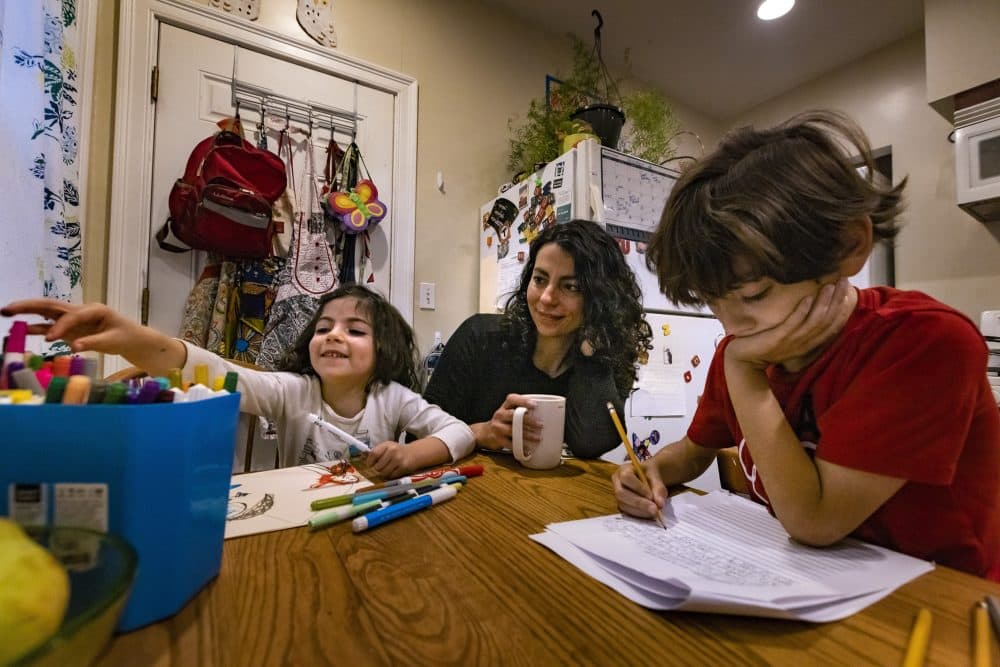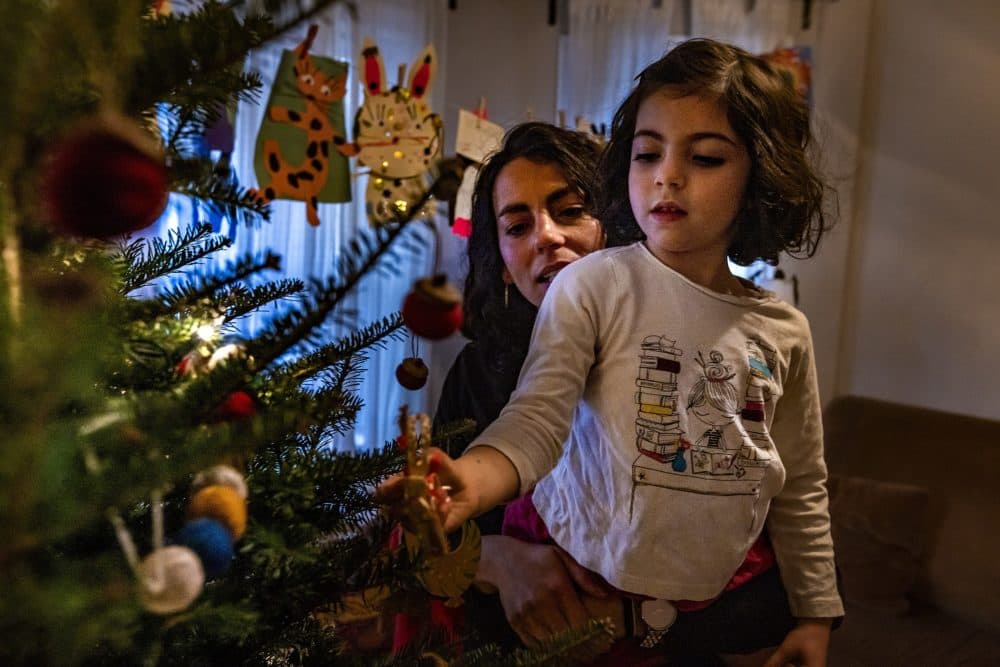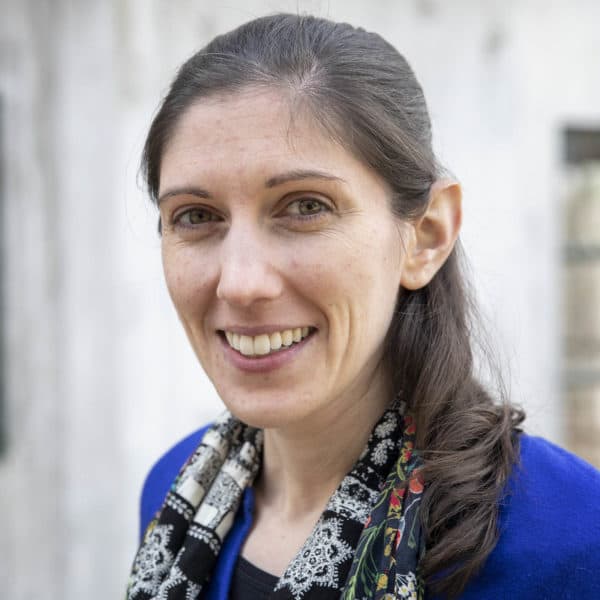Advertisement
Coronavirus Coverage
'A false sense of security': Critics question Mass. COVID testing program in schools

A few weeks ago, Boston parent Mei Elansary asked her daughter how many students in her kindergarten class received the routine coronavirus testing that the state offers schools for free.
“And she was like, ‘Well, it's me,’ and she named three other students,” recalled Elansary, a pediatrician and mother of two students in Boston Public Schools.
The principal at her daughter's school — West Zone Early Learning Center — told Elansary that, in the school overall, about 60% of students had returned the consent forms that allow them to participate in the testing program. That’s a little higher than the district as whole, where just over 50% of students are enrolled in coronavirus testing.
To Elansary, that didn’t seem like enough. She said taking her daughter to school the next morning was hard.
“She went off with her backpack, and I was filled with so much dread and worry for her,” recalled Elansary.
Rising COVID numbers in Massachusetts — and the arrival of the new omicron variant — have reignited debate over the state’s program for coronavirus testing in public schools. Critics question whether enough students are participating to make the results useful, and whether the benefits that do exist are being felt evenly across the state.
Opt-in versus opt-out
Gov. Charlie Baker has touted the testing program as “the broadest and most significant testing program in the country for kids and staff in schools.”
Speaking on GBH radio on Dec. 1, he said more than 2,000 schools are participating.
“We test all the kids for the most part in school every week,” Baker explained.
However, data from school districts suggest otherwise. Just about 25% of students participate in coronavirus testing in Lowell Public Schools. In Lawrence and Springfield, it’s about 40% of students. In Cambridge, participation is significantly higher — around 75%.
Advertisement
"If you're only testing about half the students routinely, then you can easily miss cases in the other half of students. Thinking epidemiologically, that would really seem to be insufficient."
Ramnath Subbaraman
Districts reporting low enrollment numbers are concerning to Ramnath Subbaraman, a professor in the department of public health and community medicine at the Tufts University School of Medicine and an infectious disease physician.
“If you're only testing about half the students routinely, then you can easily miss cases in the other half of students,” he said, noting the BPS rate of about half of students enrolled in testing. “Thinking epidemiologically, that would really seem to be insufficient.”
Subbaraman pointed to other school districts — like Los Angeles — that have mandated coronavirus testing for all students.
Massachusetts has taken a different approach. For districts that choose to participate in the state’s testing program, parents have to opt-in by signing a consent form.
Bisola Ojikutu, the director of the Boston Public Health Commission, which advises Boston Public Schools, is among a group of public health experts, local school officials and parents that have advocated for automatic enrollment in testing, and allowing parents to notify the school if they don’t want to participate.
“Our thought is that this should actually be an opt-out process as opposed to an opt-in process,” said Ojikutu.
One of her concerns is that participation rates vary a lot between schools within BPS. For example, some schools have consent forms from more than 90% of students, while in other schools, it can be as low as 30%.
“That brings up issues of health equity. So there are going to be some populations, some parents who are overwhelmed with other things," said Ojikutu. "Or it may just have escaped them to sign the consent form.”
Some research suggests that, in general, opt-out systems tend to have higher participation rates. However, state education officials say an opt-in system is necessary because of student privacy laws, which don't allow them to share students' personal information without written consent from a parent or guardian.
The Department of Elementary and Secondary Education (DESE) declined interview requests for this story, but said in an email that “participation in COVID-19 testing requires the school to disclose a student’s identity, demographic, and contact information from education records to the testing provider."
A DESE spokesperson said the agency cannot invoke an emergency exception to the law that prohibits sharing this information because the commonwealth lifted its state of emergency in June, even if a federal state of emergency is still in effect.
Getting students enrolled

Mei Elansary is one of a group of parents who say if Massachusetts is going to use an opt-in model, the state needs a bigger outreach effort to get kids signed up. So far, she’s not been impressed.
“We can do better and the kids deserve much better,” she said.
Over the summer, school district officials say enrollment efforts were hampered when the state failed to provide consent forms in time to be included with other back-to-school forms.
“We tried to wait for the consent form to be available for the testing program and, at some point, we had to move forward with the rest of our annual forms packet,” said Lyndsay Pinkus, chief strategy officer of Cambridge Public Schools. She said implementing the testing program is a “massive effort,” and Cambridge has hired a health aide for every school to help facilitate the program.
As the school year started, it became clear to Erin McManus, a BPS nurse at the Thomas Edison School in Brighton, that despite the state hiring an outside contractor — CIC Health — to administer the testing program, much of the enrollment effort, and sometimes the testing itself, was falling to individual schools and their nurses.
“We're stuck between keeping our school safe and refusing to do it because it's not our job,” said McManus. “Some nurses are amazing nurses, but just don't have the bandwidth or don't have the support from their administration.”
And she added, enrollment numbers are often higher than actual testing numbers. She said some high schoolers — like her son — might not have time during the day to get swabbed in the cafeteria. And since representatives from CIC Health don’t know students personally, kids are often marked as “missing” or “couldn’t find” if they can’t be located immediately.
McManus worries that many people are under the false impression that all students and staff are being tested. “It was a big reason why a lot of people felt comfortable sending their kids back to school this year,” she said. “There’s a false sense of security.”
In early November, Elansary attended a parent meeting for her daughter’s school, “and it was just clear to me that there had been very little advocacy and education and outreach to parents,” she said.
By the beginning of December, Elansary said West Zone Early Learning Center had several students test positive for the coronavirus, including in her daughter's class.
Through contact tracing, Elansary said, there's been more outreach to parents, and many more have signed the consent forms needed for testing. But she hopes other schools will not wait for positive cases to try and boost enrollment in COVID testing.
Elansary says, if nothing else, the opt-in rates at each school should be made public and easy to find so parents can know how much testing is — and isn’t — happening when they send their kids into school.
This segment aired on December 7, 2021.
